Weekly Current Affairs (1st to 7th March 2025) - 1 | Weekly Current Affairs - UPSC PDF Download
Champakam Dorairajan Case and Evolution of FRs and DPSPs
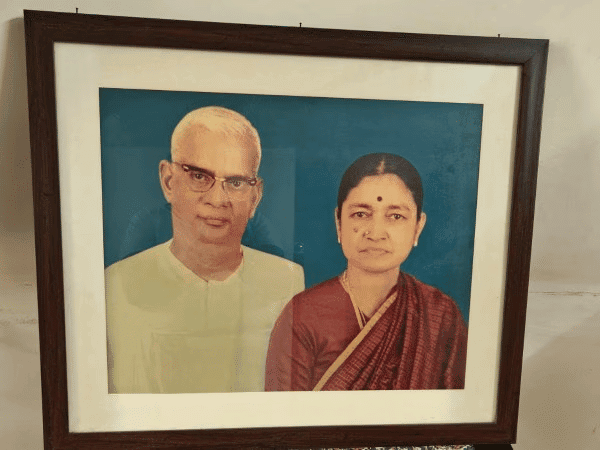
Why in News?
The Champakam Dorairajan Case of 1951 marked a significant moment in Indian constitutional law, as it was the first instance highlighting the conflict between the Fundamental Rights (FRs) and Directive Principles of State Policy (DPSPs).
Key Takeaways
- The case arose from a 1948 Madras government order reserving educational seats based on caste and religion.
- The Madras High Court ruled the order unconstitutional, which was upheld by the Supreme Court in 1951.
- The Supreme Court asserted the supremacy of Fundamental Rights over Directive Principles.
- This led to the Constitutional Amendment Act of 1951, which introduced provisions for reservations in educational institutions.
Additional Details
- Background of the Case: In 1948, the Madras government issued a Communal General Order (GO) reserving educational seats for certain castes and religions, citing Article 46 of the Constitution.
- The case was brought to the Madras High Court by a woman from Madras, who contended that the order violated her right to equality under Article 14.
- Supreme Court Verdict, 1951: The Supreme Court upheld the Madras HC ruling, stating that the Communal GO was unconstitutional as it violated Article 15(1), which prohibits discrimination based on religion, race, caste, sex, or place of birth.
- Constitutional Amendment Act, 1951: This amendment introduced Article 15(4), allowing the state to make special provisions for the advancement of socially and educationally backward classes, Scheduled Castes (SCs), and Scheduled Tribes (STs).
The Champakam Dorairajan case established a precedent for the relationship between FRs and DPSPs, influencing future constitutional amendments and judicial interpretations. Subsequent rulings, including the Golaknath, Kesavananda Bharati, and Minerva Mills cases, further shaped the balance between these principles, emphasizing the importance of social justice while upholding individual liberties and judicial review as constitutional safeguards.
Issue of Pradhan Pati in Panchayats
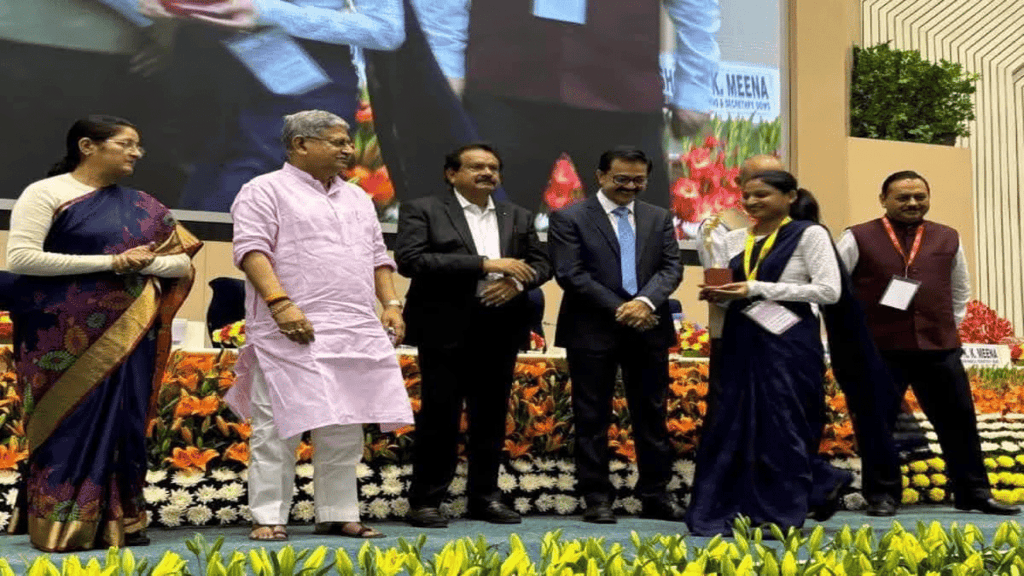 Why in News?
Why in News?
A panel established by the Ministry of Panchayati Raj in 2023 has released its report titled Transforming Women’s Representation and Roles in Panchayati Raj Systems and Institutions: Eliminating Efforts for Proxy Participation. The report recommends implementing “exemplary penalties” to address the practice of ‘Pradhan Pati’, alongside suggesting policy reforms, training, and technology-driven solutions aimed at empowering women leaders.
Key Takeaways
- Introduction of strict penalties for proxy leadership.
- Recommendations for structural and policy reforms in Panchayati Raj Institutions (PRIs).
- Technological interventions such as Virtual Reality (VR) training and AI-powered guidance.
Additional Details
- Strict Penalties for Proxy Leadership: The committee proposes enforcing exemplary penalties for instances where male relatives act as proxies for elected women representatives in PRIs.
- Structural and Policy Reforms:Key recommendations include:
- Gender-exclusive quotas in panchayat subject and ward-level committees, inspired by Kerala's model.
- Annual “Anti-Pradhan Pati” awards to celebrate efforts against proxy leadership.
- Appointment of women's ombudspersons to manage related complaints.
- Public swearing-in ceremonies in Gram Sabhas to affirm women pradhans’ authority.
- Establishment of a federation of women panchayat leaders for mutual support.
- Technological Interventions:The committee suggests:
- VR simulation training to improve governance skills.
- AI-driven real-time legal and governance support in local languages.
- WhatsApp groups connecting Women Elected Representatives (WERs) with officials for issue resolution.
- The Panchayat Nirnay Portal for tracking pradhans' participation, enhancing transparency.
- Collaboration with educational institutions and international agencies for leadership programs.
- Pradhan Pati Issue: Also termed as ‘Sarpanch Pati’ or ‘Mukhiya Pati’, this issue involves the husbands of elected women leaders wielding authority on their behalf, leading many WERs to act simply as figureheads. This dynamic diminishes their autonomy and reinforces patriarchal norms, undermining the spirit of the 73rd Constitutional Amendment.
- Menace of Pradhan Pati: With approximately 2.63 lakh panchayats in India, women represent 46.6% (15.03 lakh) of the total 32.29 lakh elected representatives. Despite their numbers, effective participation remains low, particularly in northern states where male relatives often dominate decision-making.
- Challenges: Patriarchal norms and bureaucratic neglect diminish women’s authority, often relegating them to figureheads. Threats, violence, and social pressure act as deterrents against women’s active participation in governance. The committee warns that strict penalties could drive the issue underground rather than addressing underlying causes like patriarchy.
In summary, the committee's recommendations aim to transform the landscape of women's representation in Panchayati Raj, ensuring that elected women leaders can fulfill their roles without the overshadowing influence of male relatives.
Agritourism in India
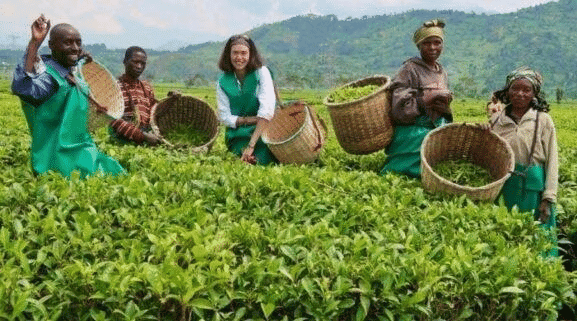 Why in News?
Why in News?
Himachal Pradesh (HP) is promoting agritourism to strengthen its economy, contributing around 7% to the State's GDP.
Key Takeaways
- Agritourism connects agriculture with tourism, providing farmers with additional income.
- It boosts rural economies by creating jobs and promoting sustainable practices.
Additional Details
- Agritourism: A commercial enterprise that attracts visitors to farms for education or entertainment, helping farmers diversify their income sources.
- Benefits:
- Provides alternative income for farmers through farm stays, tours, and hands-on experiences.
- Creates jobs for local artisans, guides, and cooks, empowering rural women and youth.
- Promotes sustainable tourism by supporting organic farming and eco-friendly practices.
- Preserves agricultural heritage by showcasing traditional farming methods and crafts.
- Government Initiatives: Various schemes, such as the Dekho Apna Desh and Agriculture Infrastructure Fund, support agritourism development.
- State-Level Initiatives:
- Maharashtra: Established the Agro-Tourism Development Corporation (ATDC) in 2005.
- Karnataka: Offers coffee plantation stays in Coorg.
- Kerala: Launched the Kerala Agro-Tourism Network for spice cultivation tours.
- Sikkim: Features sustainable agriculture lessons and farm visits.
- Challenges:
- High competition from other tourism types and low awareness of agritourism.
- Poor accessibility to rural areas deters tourists.
- Land use conflicts where tourism may divert land from agriculture.
- Seasonal dependency affecting income stability.
- Lack of skills among farmers in tourism management and customer service.
Agritourism has significant potential in India, with various states showcasing unique agricultural practices. By addressing challenges and enhancing infrastructure, agritourism can play a vital role in boosting rural economies and employment opportunities.
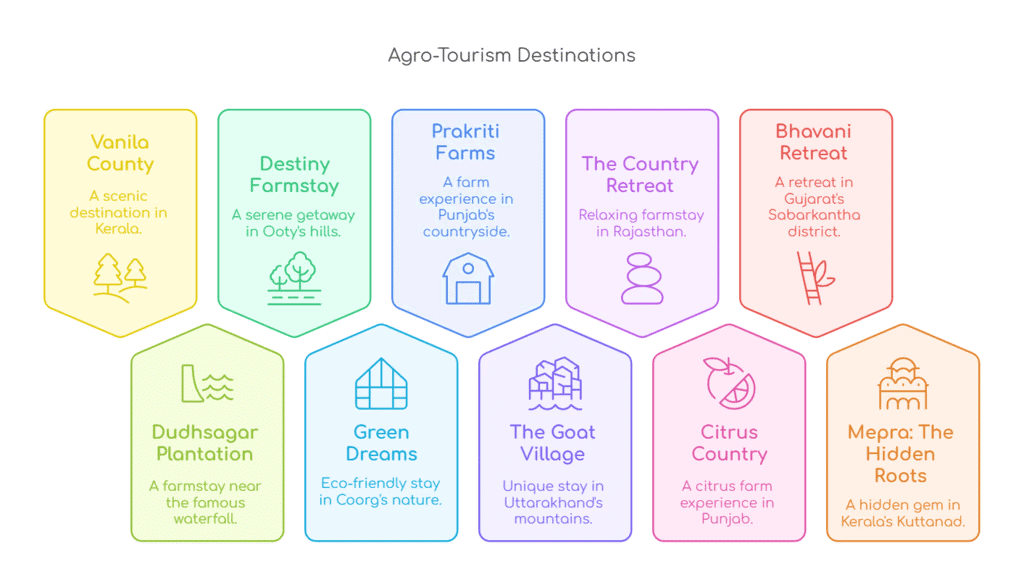 Mains Question
Mains Question
Q: Discuss the role of agritourism in boosting rural economies and employment in India. What measures can be taken to enhance its growth?
Tea Industry and Jhumoir Dance
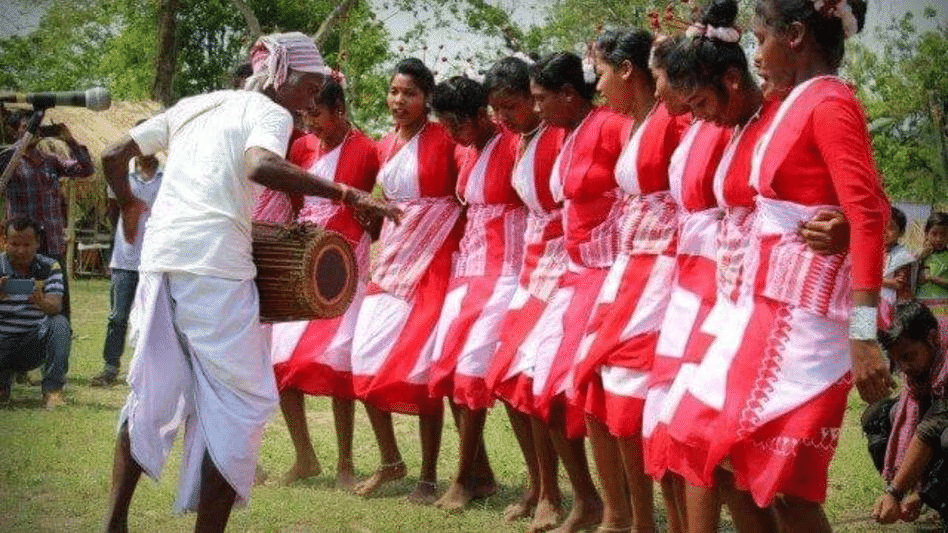 Why in News?
Why in News?
Prime Minister Narendra Modi attended Jhumoir Binandini 2025, a cultural event in Guwahati, Assam, celebrating 200 years of Assam’s tea industry and its Tea Tribe through the traditional Jhumoir dance.
Key Takeaways
- Jhumoir dance is a traditional folk dance of Assam’s Adivasi tea tribes.
- Tea cultivation in India started in the early 19th century by the British.
- India is the second-largest tea producer in the world, contributing 21% of global tea production.
Additional Details
- Jhumoir Dance: A traditional dance brought by the tea garden community from Jharkhand’s Chotanagpur region, performed during harvests, weddings, and gatherings.
- The dance features rhythmic footwork, lively music, and is performed in a circular formation by both men and women.
- Tea Cultivation in India: Originated when British colonizers discovered local tribes consuming tea. The British commercialized its cultivation.
- India’s tea industry consists of 39,700 tea estates and employs over one million workers.
The Jhumoir dance not only showcases the cultural heritage of Assam's tea tribes but also symbolizes the unity and struggles faced by the tea garden communities. As the tea industry faces challenges like climate change and labor issues, it is crucial to support sustainable practices and improve the welfare of workers for the future of this significant sector.
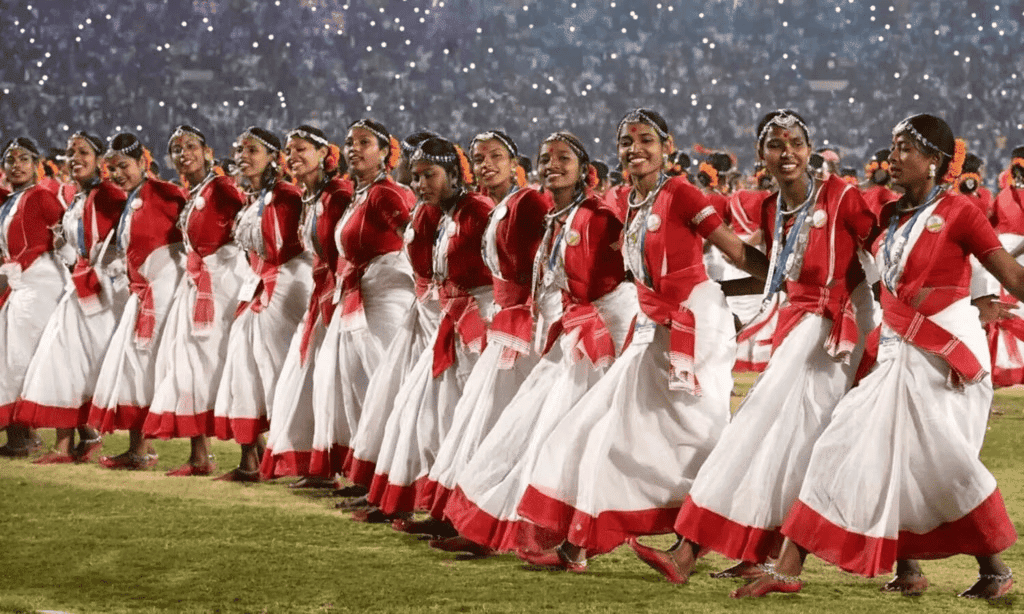
Key Facts About Tea
- Characteristics of Tea Plants: Tea belongs to the Camelliaceae family with two main species: Camellia sinensis and Camellia assamica.
- Tea thrives in sub-tropical climates with ideal temperatures between 16-32°C, requiring 150 cm of annual rainfall and 80% humidity.
- India has geographical indication tags for several famous teas, including Darjeeling and Assam Orthodox Tea.
Challenges in the Indian Tea Industry
- Declining Tea Production: A significant decline in production is noted, affecting revenue and prices.
- Impact of Climate Change: Fluctuating temperatures and rainfall patterns are harming tea quality and yield.
- Pesticide Ban: The ban on specific pesticides has increased production costs and made pest control challenging.
- Wages of Tea Workers: Reports indicate inadequate wages and poor implementation of labor laws affecting workers' livelihoods.
Way Forward
- Climate Resilience Measures: Implement climate-smart agricultural practices and promote agroforestry.
- Sustainable and Organic Tea Production: Expand organic farming to meet global demands.
- Labor Welfare Reforms: Ensure fair wages and improve access to essential services for tea workers.
- Market Diversification: Explore new export markets and develop value-added tea products.
To increase India’s competitiveness in the global tea market, it is essential to address the existing challenges through sustainable practices, improved labor conditions, and diversified market strategies.
Mains Question:
Q: Evaluate India’s position in the global tea market. What steps should be taken to increase its competitiveness in tea exports?
Rising Obesity Burden in India
Why in News?
The Prime Minister has expressed growing concern over the increasing rates of obesity, particularly among children, and has called for a shift towards healthier lifestyle choices.
Key Takeaways
- Obesity rates are rising significantly in India, especially among children.
- The World Health Organization (WHO) defines obesity based on Body Mass Index (BMI) metrics.
- Obesity is linked to numerous health risks including cardiovascular diseases and diabetes.
Additional Details
- What is Obesity? Obesity is defined by the WHO as an abnormal or excessive fat accumulation that poses health risks. A Body Mass Index (BMI) of 25 or above is classified as overweight, while a BMI of 30 or above indicates obesity.
- Obesity Statistics: According to the National Family Health Survey (NFHS-5) conducted between 2019-2021, 24% of Indian women are classified as overweight or obese. Additionally, the percentage of overweight children under five has risen from 2.1% to 3.4% since the previous survey.
- Global Trends: From 1990 to 2022, obesity rates in children and adolescents (ages 5-19) increased from 2% to 8%, while adult obesity rates more than doubled from 7% to 16%.
- Health Risks: Obesity significantly raises the risk of non-communicable diseases (NCDs) such as cardiovascular diseases, diabetes, cancer, joint disorders, and psychosocial issues including low self-esteem and anxiety.
- Economic Impact: In 2019, obesity cost India approximately USD 28.95 billion, impacting healthcare expenses and productivity. This burden is projected to increase significantly by 2030.
To address the rising obesity rates, a multi-faceted approach is necessary. This includes revamping nutrition interventions, enhancing public awareness, regulating unhealthy diets through taxation, implementing mandatory obesity screenings, and incorporating healthy eating into school curricula.
Strengthening Tribunals in India

Why in News?
The Supreme Court (SC) is currently examining significant issues affecting tribunals and reviewing the constitutional validity of the Tribunal Reforms Act, 2021. This review emphasizes the importance of strengthening tribunals to ensure efficient adjudication and maintain public confidence.
Key Takeaways
- The Tribunal Reforms Act, 2021 was enacted to streamline the functioning of tribunals.
- The Act dissolves certain appellate tribunals and transfers their functions to existing judicial bodies like High Courts.
- It responds to the Supreme Court's ruling in the case of Madras Bar Association vs. Union of India (2021).
Additional Details
- Tribunal Reforms Act, 2021: The Act aims to enhance tribunal efficiency by abolishing multiple appellate tribunals and assigning their functions to High Courts and other judicial bodies.
- Search-cum-Selection Committee: This committee recommends the appointment of tribunal chairpersons and members, ensuring a structured selection process.
- Tenure and Age Limits: Chairpersons and members have a tenure of 4 years, with age limits set at a minimum of 50 years and a maximum of 67 years for members and 70 years for chairpersons.
- Removal of Tribunal Members: The Central government can remove a Chairperson or a Member based on recommendations from the Search-cum-Selection Committee.
- Functions of Tribunals: Tribunals are quasi-judicial bodies that resolve disputes related to administration, taxation, environment, and more.
- Constitutional Provisions: Introduced through the 42nd Amendment Act, 1976, Articles 323-A and 323-B govern administrative tribunals and various other matters.
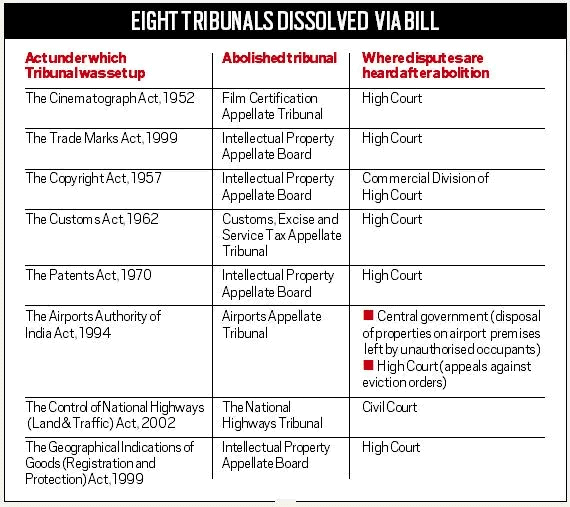 What are Tribunals?
What are Tribunals?
A tribunal is a quasi-judicial body that addresses disputes related to various sectors including administration, taxation, and the environment. Their functions include:
- Adjudicating disputes and determining rights between parties.
- Making administrative decisions and reviewing existing rulings.
Challenges Related to Tribunals
- Staff Shortage: A lack of presiding officers and judicial members increases case pendency, particularly noted in Insolvency and Bankruptcy Code (IBC) cases.
- Infrastructure Deficiencies: Many tribunals face inadequate facilities and technical support, impacting case efficiency.
- Procedural Inefficiencies: Frequent adjournments and missed deadlines lead litigants to seek higher courts.
- Political and Administrative Indifference: Budget constraints and lack of commitment hinder tribunal efficiency.
Way Forward
- Accelerated Appointments: Timely appointment of judicial and technical members is crucial for efficient tribunal operations.
- Investment in Technology: Implementing electronic case management and digitization can enhance tribunal efficiency.
- Procedural and Administrative Reforms: Enforcing strict limits on adjournments and improving case scheduling will help reduce backlogs.
- Autonomy and Accountability: Greater autonomy will allow tribunals to function independently while ensuring transparency and resource allocation.
The significance of tribunals in the Indian judicial system cannot be overstated. They play a crucial role in ensuring timely justice and decongesting the traditional judiciary. However, addressing the challenges they face is essential for their effective functioning and for maintaining public trust in the judicial process.
NBWL and Wildlife Conservation

Why in News?
The Prime Minister chaired the 7th meeting of the National Board for Wildlife (NBWL) at the Gir National Park (Junagadh, Gujarat) on the occasion of World Wildlife Day (3rd March) and announced several initiatives aimed at wildlife conservation.
Key Takeaways
- Prime Minister emphasized the need for wildlife conservation during the 7th NBWL meeting.
- World Wildlife Day is observed on 3rd March to highlight the importance of protecting biodiversity.
- New initiatives were announced for the conservation of critically endangered species.
Additional Details
- World Wildlife Day: Established by the UN General Assembly in December 2013, it is observed annually on 3rd March to raise awareness about the urgent need to protect biodiversity amidst climate change, biodiversity loss, and pollution.
- Great Indian Bustard Conservation: A conservation plan was launched to address the declining population of this critically endangered species.
- Community Participation: PM urged involvement from local communities, such as the Maldhari community, in wildlife conservation and sustainable coexistence.
- National Referral Centre for Wildlife: Foundation stone laid for a hub for wildlife health and disease management in Junagadh.
In conclusion, the initiatives announced during the 7th NBWL meeting highlight the government's commitment to wildlife conservation and the importance of community involvement and innovative technology in addressing conservation challenges.
|
287 docs|142 tests
|
FAQs on Weekly Current Affairs (1st to 7th March 2025) - 1 - Weekly Current Affairs - UPSC
| 1. What was the Champakam Dorairajan case, and what impact did it have on the evolution of Fundamental Rights (FRs) in India? |  |
| 2. How do Fundamental Rights and Directive Principles of State Policy interact in the Indian Constitution? |  |
| 3. What is the significance of the term 'Pradhan Pati' in the context of Panchayati Raj institutions? |  |
| 4. How have recent developments in law affected the role of women in Panchayati Raj institutions? |  |
| 5. What are some key challenges faced in the implementation of Directive Principles of State Policy in India? |  |
















